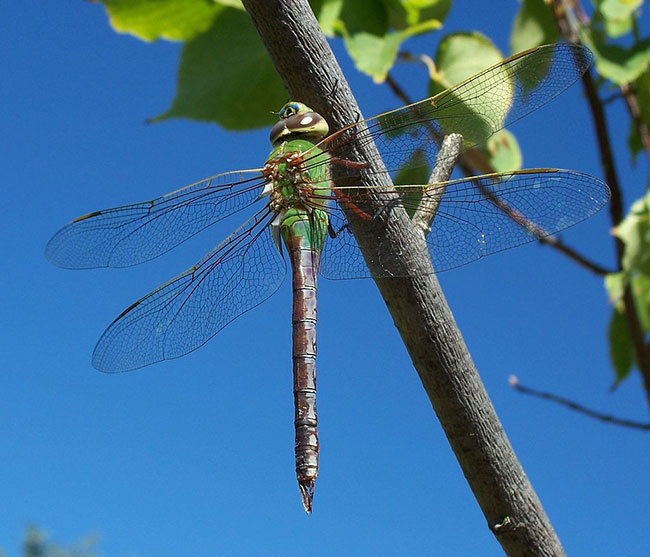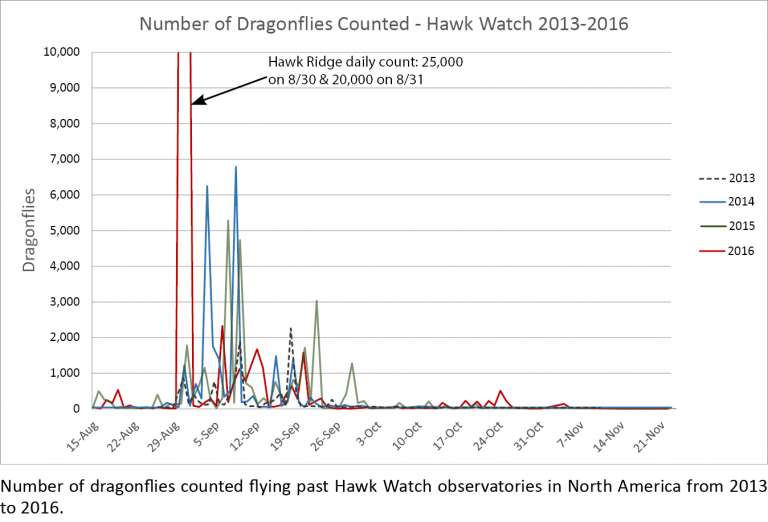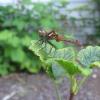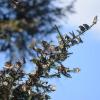This article originally appeared in the newsletter of the Hawk Watch Association of North America and has been edited from its original format.
Hawk Watch observers who gather every year to document the annual journey of hundreds of thousands of hawks, eagles, and vultures southward to overwintering grounds, are ideally placed to note the migration of dragonflies moving south along many of the same migratory routes. Indeed, this association between migrating birds and dragonflies has led to a coordinated effort to monitor the timing, direction of travel, and dragonfly species involved in migratory flights at sites along the eastern seaboard of the U.S., the Midwest, and Ontario, Canada, for the past four fall migration monitoring seasons. Hawk Watch observers have added to our growing knowledge of dragonfly migration patterns by contributing observations to the Migratory Dragonfly Partnership.
The best known and most regular dragonfly migrant in North America is the Common Green Darner (Anax junius). Each year Common Green Darners are reported in large flights often sharing the skies with other migrant dragonflies. In fact, mixed-species migrations were noted at most reporting sites, including Illinois Beach State Park—a hot spot of migratory activity in Illinois. Here, and at additional sites in the Great Lakes region, Common Green Darners were joined by Black Saddlebags (Tramea lacerata) in large migratory flights. We know from other observations along the east coast of Mexico that these two species are seen in much lower proportions compared to Spot-winged (Pantala hymenaea) and Wandering Gliders (Pantala flavescens). With the addition of Bentsen Rio Grande Valley State Park in Texas as a monitoring site in 2016, Common Green Darners were reported almost every observation day, with few Wandering Gliders reported, and no Spot-winged Glider reports. Does this indicate Wandering and Spot-winged Gliders generally limit their migration to the southern parts of North America? Do Common Green Darners stop for the winter somewhere in northeast Mexico or Florida? These new observations raise interesting questions, and remind us that the connectivity between southbound migration flights in the eastern U.S. and Mexico are still unclear.

Though researchers and citizen scientists have joined forces for decades to piece together the flights of both migrating birds and monarchs, the full extent of migration in dragonflies is less well known. The nature of dragonfly migrations can be sporadic and discontinuous, but noting the concurrent movement of these migrants with birds helps shed light on timing and intensity of flights. Fall migration for reporting sites begins around the end of August and can continue into early November. Within that span, some days see enormous spikes in the number of passing dragonflies while others have no activity at all. Although the numbers are usually highest in September, a strong two-day migration pulse of 45,000 dragonflies was observed in 2016 near the end of August in the Central Flyway of North America. These migrating dragonflies were reported moving through the Hawk Ridge observatory in Duluth, Minnesota.

While this Midwestern site has consistently reported the most dragonflies each year since reporting began in 2013, migration pules there had not previously been recorded to exceed 7,000 dragonflies in a daily count. The local geography likely is a strong contributor to the presence of so many migrating birds and dragonflies. The Great Lakes create barriers which funnel migrating animals on the wing as they skirt shorelines like Lake Superior to avoid flying over long expanses of water. With additional years of data, we can better know if the 2016 pulse was an anomaly, or part of a longer ongoing pattern – and how factors that influence dragonfly migration may also effect monarch and bird migration.
Spring and Fall Migration Monitoring
Are you a Hawk Monitor? Please Consider Adding Dragonfly Migration Monitoring to Your Monitoring Location
Dragonflies often join raptors on the epic migratory journey for both north and southbound flights. Broadening our efforts at Hawk Watch sites by increasing the number of locations taking observations and gathering data on both fall and spring migrations, is integral to understanding the complete cycle of migration. Though more diffuse than fall migration, the offspring of dragonflies who moved south for the winter migrate north to ponds and wetlands in North America to breed. Establishing monitors at additional sites will give us a more complete picture of migration activities and pathways in North America. Please consider monitoring dragonflies as they head north in spring and south in the fall. We need your help to collect long-term data on the movements of migrating dragonflies!
- Find an observation site near you at hawkcount.org
- For more information about HMANA’s involvement in MDP, monitoring guidelines, and protocol, please visit: http://www.hmana.org/migratory-dragonfly-partnership.



